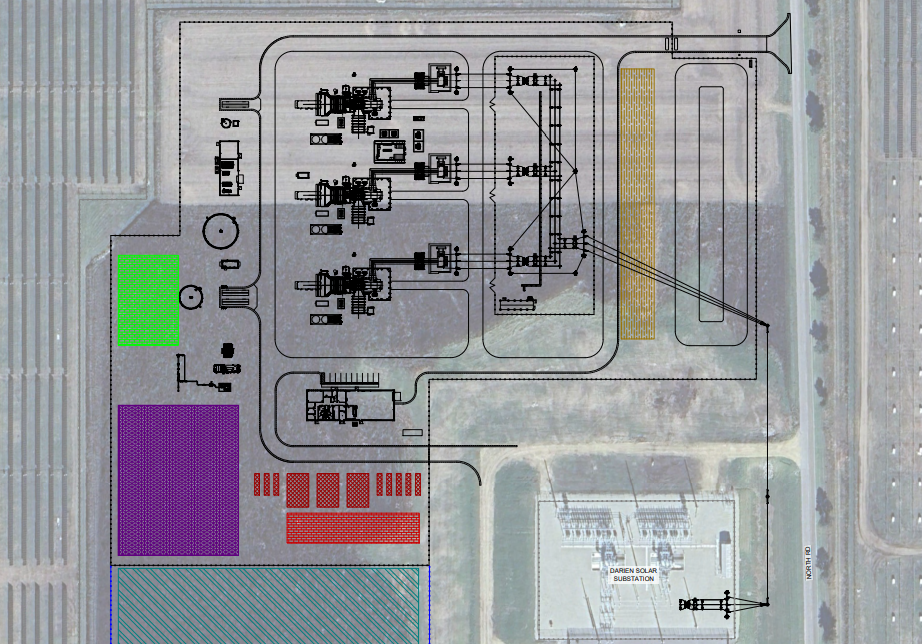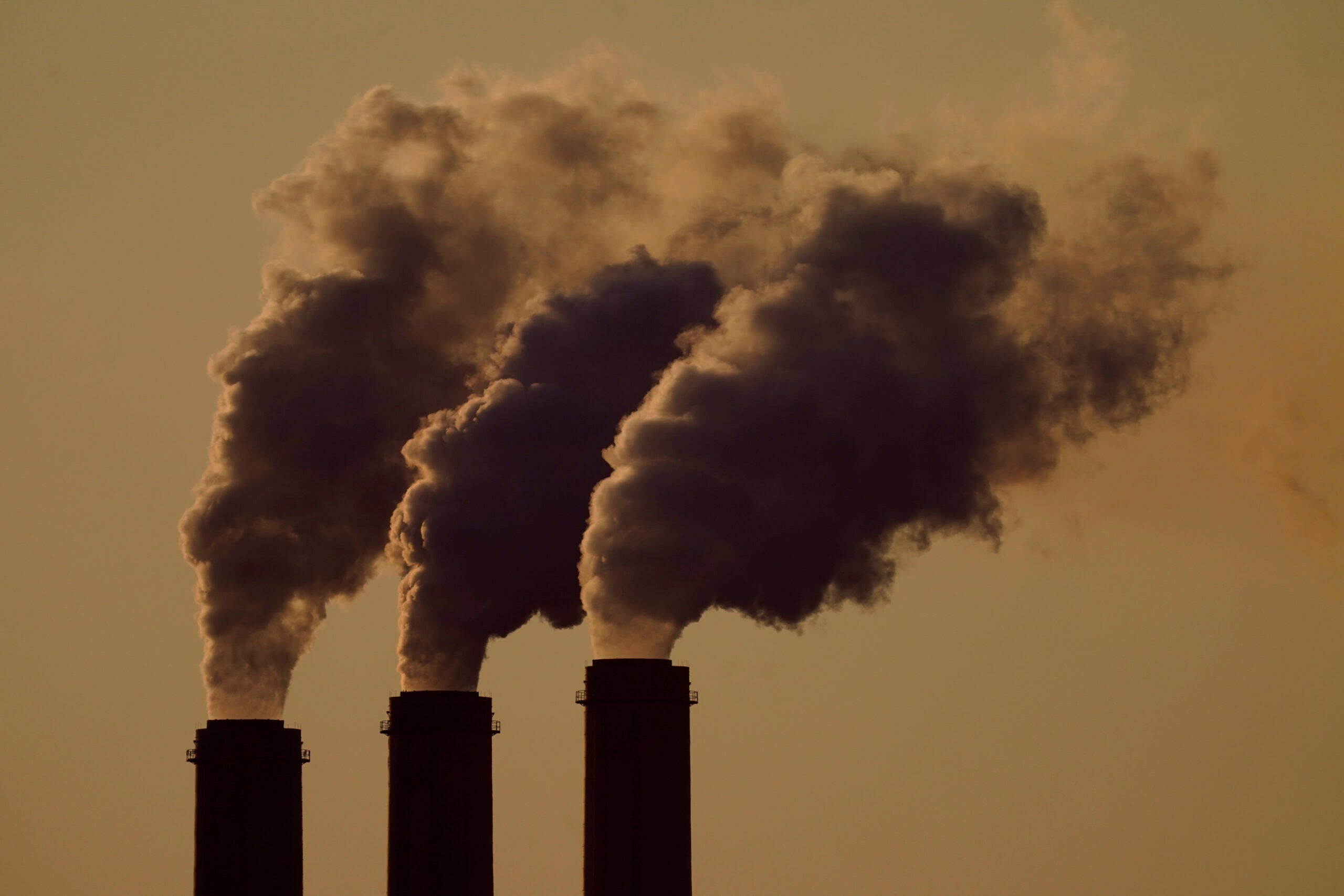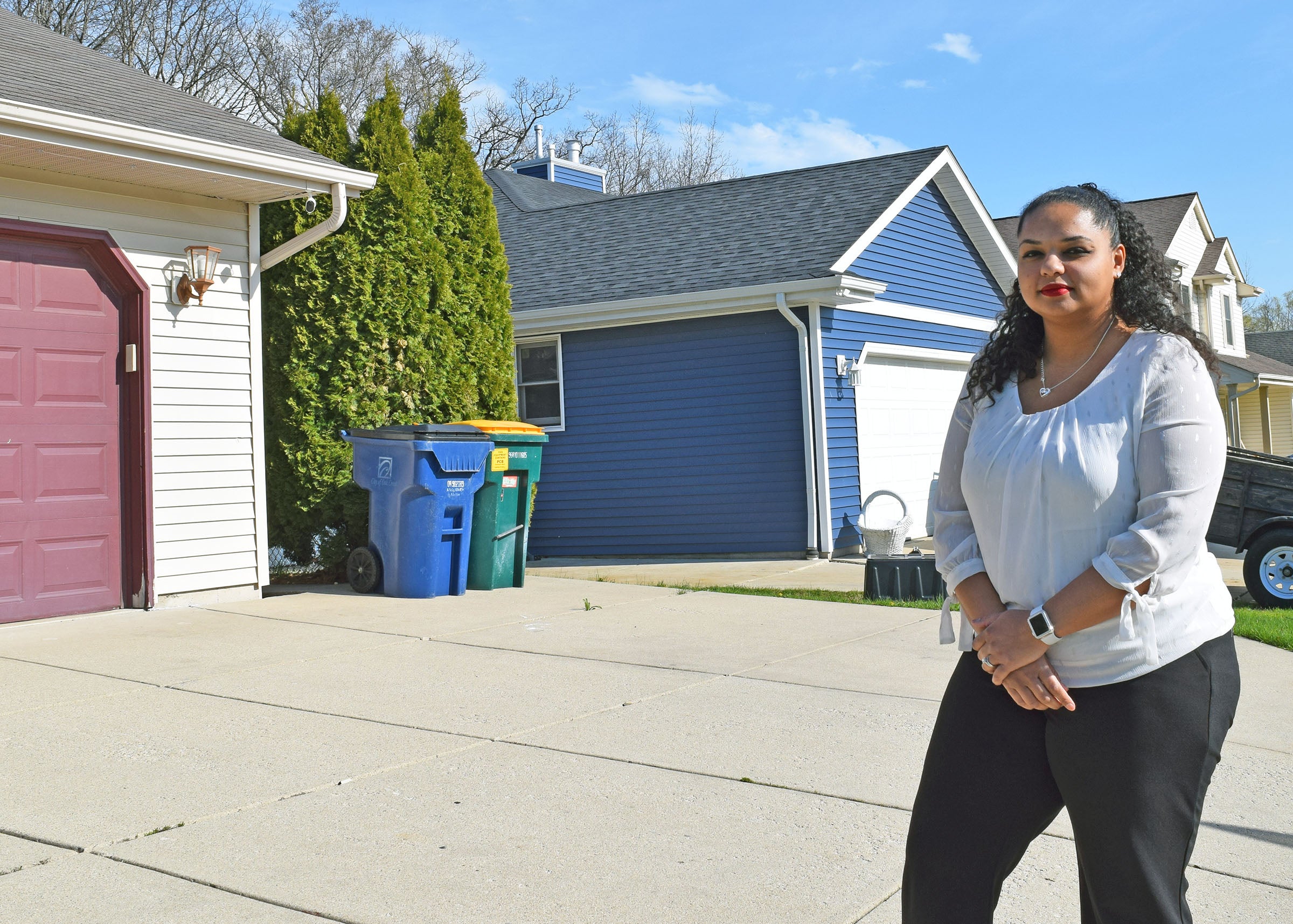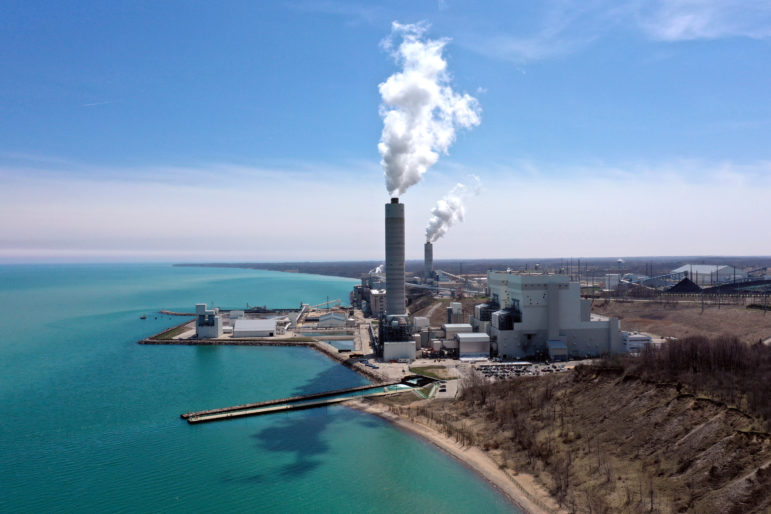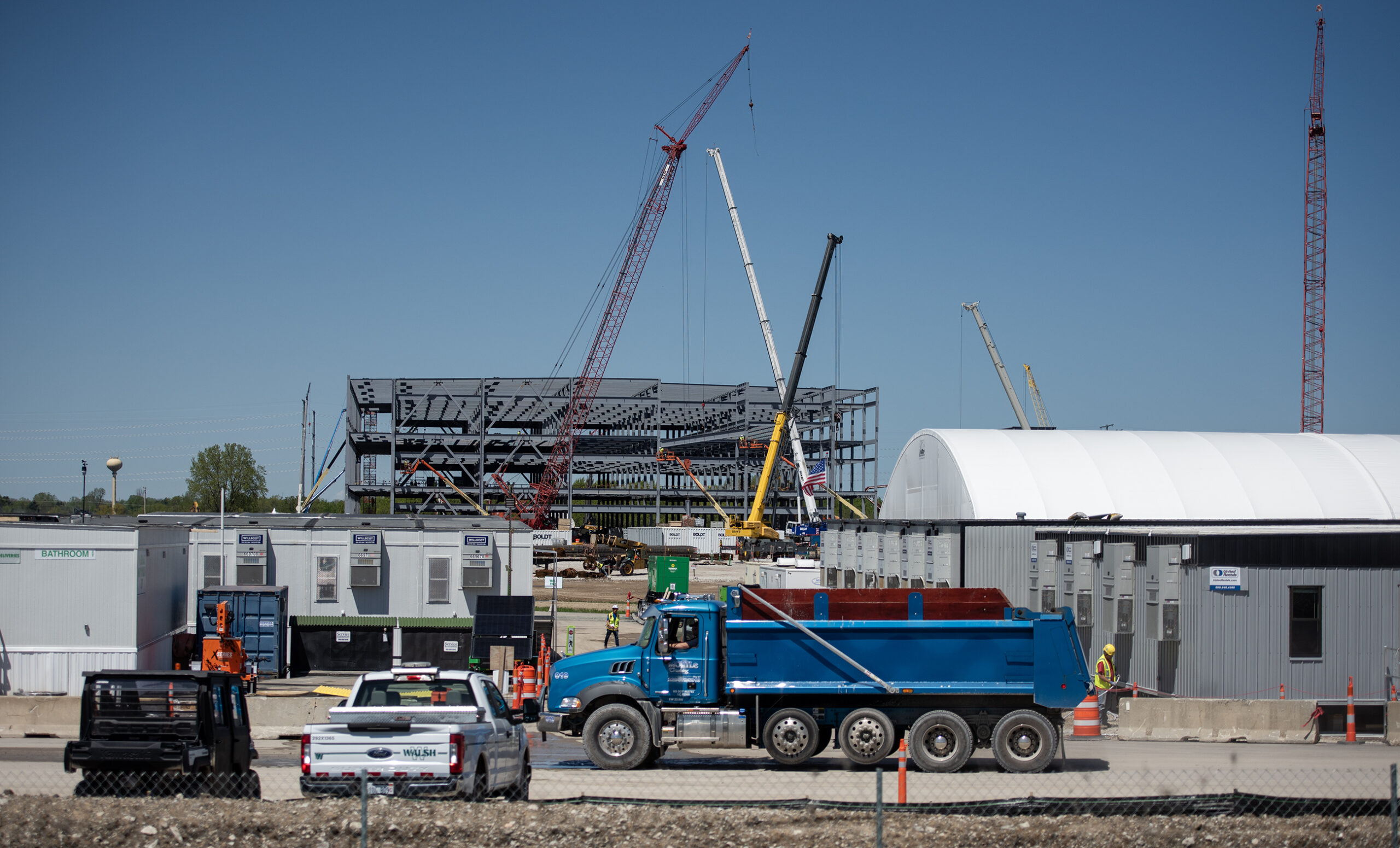Two of the nation’s power plants that create electricity from burning municipal trash are located in western Wisconsin.
In La Crosse, the Xcel Energy French Island Generating Plant reports incinerating about 72,000 tons every year. At the Barron County Waste to Energy Facility, nearly 300 pounds of household trash, plastic and other material is burned every 10 minutes.
The facilities’ emissions are regulated by the U.S. Environmental Protection Agency and the Wisconsin Department of Natural Resources. For a closer look at these unusual power plants in the state, WPR’s “The Morning Show” recently spoke with Lauren Wentz, who teaches a DNR-certified course on operating an incinerator.
News with a little more humanity
WPR’s “Wisconsin Today” newsletter keeps you connected to the state you love without feeling overwhelmed. No paywall. No agenda. No corporate filter.
At each power plant, Wentz said, burning trash essentially helps to heat water, which produces steam to propel turbines and generate electricity. At the Barron County facility, however, a portion of the steam also uniquely helps out neighboring cheesemakers.
“Heat from the steam is actually distributed both on-site at the incinerator facility to heat the working spaces, and it’s also sent across the street to the Saputo Cheese factory, where the cheesemakers there use it both to heat buildings and as part of the cheese-making process,” said Wentz, a biology professor of the Barron County campus at the University of Wisconsin-Eau Claire.
On “The Morning Show,” Wentz discussed federal and state regulations for municipal waste incinerators and answered several questions from listeners, too.
The following interview has been edited for clarity and brevity.
Kate Archer Kent: What training must an incinerator operator receive to be certified in Wisconsin?
Lauren Wentz: The 32 hours cover a range of topics from the history of solid waste management to the regulations. Both federal and state regulations govern waste incineration. How do you deal with things like mattresses or tires or construction materials that enter the waste stream? It includes how to keep records, worker safety and risk management on the job.
We’ve had students in the course from the wildlife research lab in Madison, several of the hospitals in Madison and even from the Xcel Energy French Island Generating Plant in La Crosse take part in the course in order to get the certification, even though their facilities may be very different from Barron County.
Listener from Green Bay: How much tonnage of waste is burnt in Barron County?
LW: The Barron County facility last year burned about 41,000 tons of municipal solid waste. They are permitted through the Wisconsin Department of Natural Resources to burn up to 100 tons per day, which means that the incinerator operates 24 hours a day, seven days a week, 365 days a year.
KAK: How does trash move through an incinerator?
LW: There’s a loading pit where the actual waste is put into the primary chamber and it moves along. There will already be a fire established there. But it moves along on a moving grate. As ash forms, the ash filters out through the grate, and by the time the initial load of trash is at the end of that chamber, it’s almost entirely gasses. The gasses rise up, go into the secondary chamber. The air falls out the bottom and then is periodically collected for further disposal.
There are three different types of ashes that can occur during incineration. Bottom ash is the ash that falls through the grate as the trash is burned and that’s moved along on a conveyor.
If you think of a campfire in your backyard and you see the little sparks fly up into the air, those are fly ash. Some of that will be collected and passed through the system eventually to be filtered out.
Then there’s also fugitive ash. That’s the type of ash that you don’t want because it’s ash that basically is uncontained. There are methods or procedures in place to avoid the release of fugitive ash, especially from the accumulated bottom of the pile that is eventually disposed of in a landfill.
According to U.S. Environmental Protection Agency regulations, any bottom ash, fly ash or other debris left over from the incineration process must go to a landfill, and it has to go to a special section.
KAK: What are new and modern air pollution control equipment that might be on these types of facilities?
LW: There are a number of different air pollution control devices. At an incinerator facility, those are all required by both federal and state regulations. There will be equipment that will deal, for example, with mercury. As mercury vaporizes during the combustion process, it’s combined with activated carbon that essentially neutralizes the mercury and will be filtered out through the filtration process further down the line. It goes into the air that is then disposed of at the landfill.
There are neutralizers for acid gasses, for example, gasses that contain sulfur or nitrogen compounds. That’s simply a matter of adding lime, or a material called trona, which is essentially the same as lime.
Then there are filtration systems. At the Barron County facility, that includes what’s known as a bag house, which essentially is like a large vacuum cleaner. It has dozens of individual fabrics stacked, and when it’s operated under negative pressure, the bag house works just like a vacuum cleaner would in your home to remove particulate matter from the gas stream.
There’s an emissions monitoring system as well. But by the time it gets to where the remaining gas is dumped, the only thing coming out of the stack is carbon dioxide, water and the original nitrogen gas that came in with the air that moved through the system. Nitrogen gas is 78 percent of our atmosphere.
Listener from Duluth, Minnesota: Duluth had to shut down its incinerator because of the mercury emissions that went up the stack. How much waste, particularly from hospitals, has mercury?
LW: Anytime mercury shows up in the solid waste stream of course it’s a concern. But through the air pollution control process, the addition of activated carbon to adsorb the mercury atoms will effectively neutralize the mercury. At that point, it’s unable to get back into the environment in its harmful form.
There have been issues nationwide and even worldwide with toxic material like mercury sort of escaping from the incinerator process, but in a well-run, well-monitored facility, it’s not necessarily a concern. It’s monitored. It’s controlled. But it’s not released into the environment.
Listener from Madison: Hearing you talk about incineration, that made me think about the movie “Sahara.” There’s a solar-powered waste facility in Africa and an unscrupulous operator was just going to dump the waste into the Atlantic Ocean.
LW: There is constant monitoring of both the emissions and the operation of the equipment within a facility that handles municipal solid waste. Part of an incinerator operator job is to monitor daily, sometimes hourly, what’s happening within the plant and recording all of the information about emissions and air that accumulates.
All of that is reported to the Wisconsin Department of Natural Resources and ultimately to the EPA. Those records are kept very, very diligently, because the law says they have to be. The end products of the incineration process are CO2 and water vapor, which are not going to pose a human health threat.
Listener from Green Bay: What happens when the monitoring system breaks down? What is the backup plan?
LW: It is possible to stop the incineration process. It may take several hours to do that, but the incinerator can be shut down. The facility can be fired up again once the situation’s corrected.
Wisconsin Public Radio, © Copyright 2025, Board of Regents of the University of Wisconsin System and Wisconsin Educational Communications Board.



